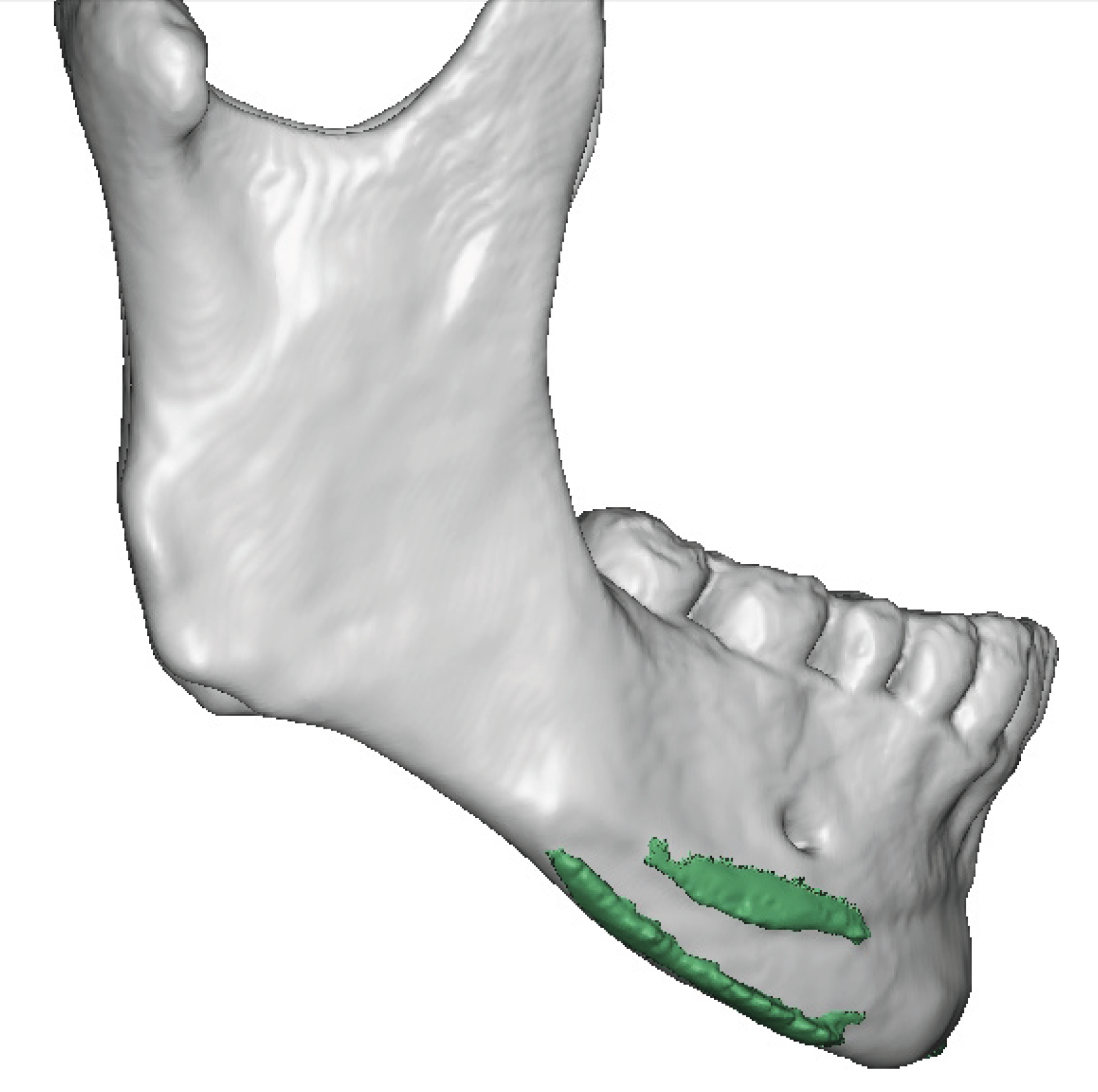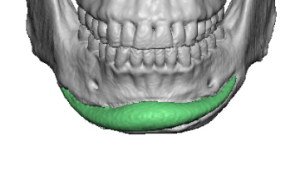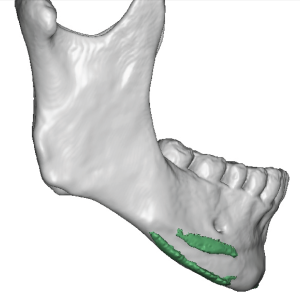Background: Chin implants are the most common alloplastic facial augmentation procedure. As a result localized reactions to an implant on the end of this lower jaw are the most well known. Bone erosion is the frequently highlighted reaction to the implant but the biologic reality is that this is a benign passive and self-limited process as the body reacts to the pressure of the implant. Once the pressure is relieved the imprinting process stops. Interestingly some chin implants will develop imprinting while others do not and implant size does not always correlate to whether it occurs or not.
It is rarely mentioned that bone overgrowth also occurs around chin implants, with or without imprinting, and is more common. Why it occurs can be debated from its subperiosteal position, as a reparative response of the bone to the implant or both. Regardless it it seen frequently in varying amounts. In replacing chin implants with a custom jawline implant they 3D CT scan needed will frequently show the location on the implant and its extent. It is seen to occur most aggressively over the top edge of the implant but can really be seen anywhere along its length. I have even seen a few cases where the entire chin implant is completely encased in bone and the implant can not even be seen.
In custom implant designing the bone overgrowths can be digitally removed and thus they do not interfere with the implant design. But in surgery such bone overgrowths will be in the way and prevent implant placement as designed. Knowing the location and extent of the bone overgrowths is helpful even though they can be fully visualized in surgery.
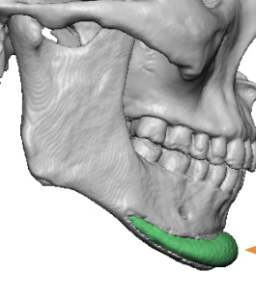
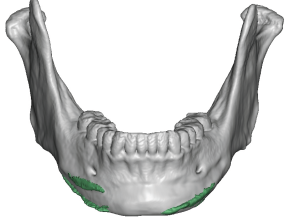
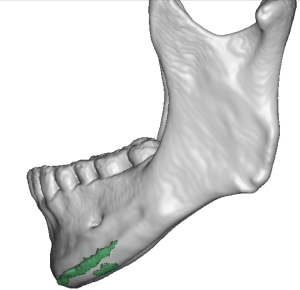
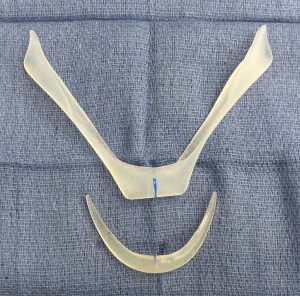
Key Points:
- 1) Chin implants often create differing amounts of bone overgrowth which can be seen on a 3D CT scan.
2) In custom jawline implant replacements the bone overgrowth is digitally removed.
3) After chin implant removal the bone overgrowth must be reduced before the custom jawline implant can be placed.
Dr. Barry Eppley
World-Renowned Plastic Surgeon

